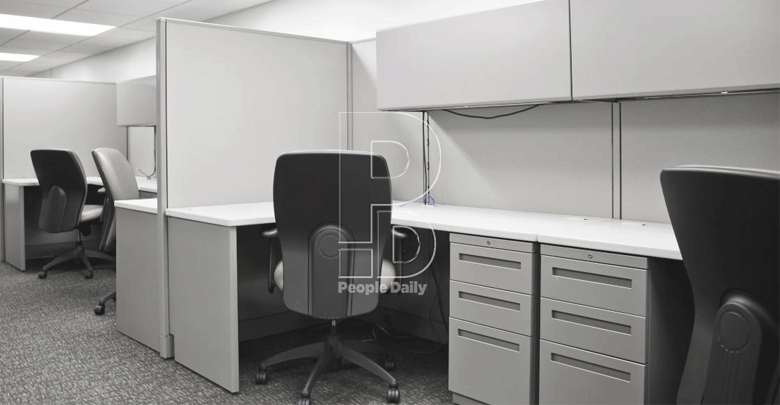How different will the post-pandemic office look like?
By Joseph Maina, January 22, 2021As the world smarts from the debilitating blows of the Covid-19 pandemic, there is need to revisit our conception of the office space and align it with the realities of this highly infectious disease.
The pandemic has reshaped our social interactions and spelled out new protocols of engagement, and this has inevitably spilled over to the office space. It cannot be business as usual in the office.
“A change in the design and flow of offices and workplaces as we know them today will be inevitable,” Architect Florence Nyole says.
Florence, an Architect with EcoSpace Architects, also doubles up as the chairperson of the Architects Chapter at the Architectural Association of Kenya.
In June, the Ministry of Industrialisation Trade and Entreprise Development released a set of guidelines for business operations during Covid-19.
Broadly, the guidelines sought to engender a culture of social distancing in the business environment, regular hand washing using running water and soap and to promote disinfection of rooms and surfaces.
The guidelines further require the donning of masks in work places and discourage handshaking or hugging as a means of exchanging greetings, while enhancing proper management of waste arising from Personal Protective Equipment (PPEs), such as used masks and gloves.
Sanitisation stations
Screening of persons entering the office space is a critical stage in enhancing a safe and healthy office environment.

She says that the implementation size of this measure would depend greatly on the scale of the office.
“A shared office block could implement spray booths and hand washing stations at the main entrance level of the entire building, while sanitiser dispensers could suffice for each floor level as well as smaller offices within the block,” she says.
Florence, social distancing can also be achieved by limiting the number of persons accessing a service facility, such as a banking hall or supermarket or hospital outpatient centre.
To further minimise close physical contact, the office of the future must reconsider its internal sitting arrangements.
“Getting into the office space, it will be crucial to rework the furniture arrangement to ensure physical distancing is observed as well as protection of persons serving at an area, such as reception desks and counters in the case of customer service heavy offices,” she says.
She further recommends a rearrangement of the individual workspace to observe the social distancing rules, as well as installation of transparent partitioning at the desk level.
“This arrangement may result in reduction of space available in comparison to pre-Covid-19 times.
Offices may, therefore, be forced to look for larger spaces or adopt working shifts that allow a balance between working from home and from the office,” she offers.
Proper aeration
Florence notes that common areas, such as meeting rooms, conference areas, kitchens and lounges will need physical markings and furniture rearrangement to ensure physical distance is observed.
Sufficient aeration of working areas will ensure maximum airflow and reduce settling of microdroplets that cause infections.
The World Health Organisation (WHO) says the virus can spread from an infected person’s mouth or nose in small liquid particles when they cough, sneeze, speak, sing or breathe heavily.
These liquid particles are in different sizes, ranging from larger ‘respiratory droplets’ to smaller ‘aerosols’.
Aerosol transmission can occur in specific settings, particularly in indoor, crowded and inadequately ventilated spaces, where infected persons spend long periods of time with others.
“Placing of windows on adjacent or across the room will become necessary to allow for passive ventilation,” says Florence.
“Use of air conditioning that recycles air within a room should be avoided as much as possible, offices using fans need good air flow in the rooms.
This calls for deliberate passive ventilation design considerations in office spaces,” she adds.
WHO says that the virus can also spread after infected people sneeze, cough on, or touch surfaces, or objects, such as tables, doorknobs and handrails.
Other people may become infected by touching these contaminated surfaces, then touching their eyes, noses or mouths without having cleaned their hands first.
Other experts say as organisations reconstruct how they work and identify what can be done remotely, they can make decisions about which roles must be carried out in person, and to what degree.
Roles can be reclassified into employee segments by considering the value that remote working could deliver from fully remote, hybrid remote, hybrid remote by exception and on site (not eligible for remote work).
For instance, organisations can ask all employees who work in cubicles, and rarely have to attend group meetings, to work from home.
As such, it may be time for businesses that have not offered to reimburse remote employees’ work-related expenses to consider doing so. These expenses can range from Internet, laptops and printers to routine office supplies, such as ink cartridges and paper.
Another option would be for employers to allow employees to bring equipment home from the office as opposed to purchasing the equipment and be reimbursed for expenses related to working remotely.
“Regardless of legal obligations or the lack thereof, providing support, whether through stipends or simply loaning equipment to remote workers, can improve company culture and further motivate workers,” said Analisse Dunne, people operations manager at Nulab, an International cloud-based compensation software firm in an interview with an online publication.
